Collecting fruit from public trees in Vienna
First published . Last updated .This summer I’ve been busily gathering fruit from trees and bushes around Vienna, which I have often found via mundraub.org, a website for mapping edible plants in the German-speaking world.
There’s something primeval about this. Here I am, an ape using a stick to shake fruits from a tree so I can eat them with my long wispy fingers. Here I am, using those same fingers to find the sweet morsels hidden behind the thorns on a bush. Just being aware of the possibilities has changed my perception of the natural world in the city: now I notice fruit trees and bushes and identify them quickly, and when I see signs of fallen fruit on the asphalt, I stop and look up. And I’m not alone: sometimes I see other people gathering food, especially in the Prater; other times I see the sticks they leave behind for others to use. It feels like being part of a tiny secret ursociety, living freely from a shared commons, hidden in the cracks of modern capitalism.
Fruit
Already in July, I’ve had a lot of luck gathering plums, blackberries, and Kornelkirschen (apparently known as “Cornelian cherries” in English, though they aren’t true cherries).
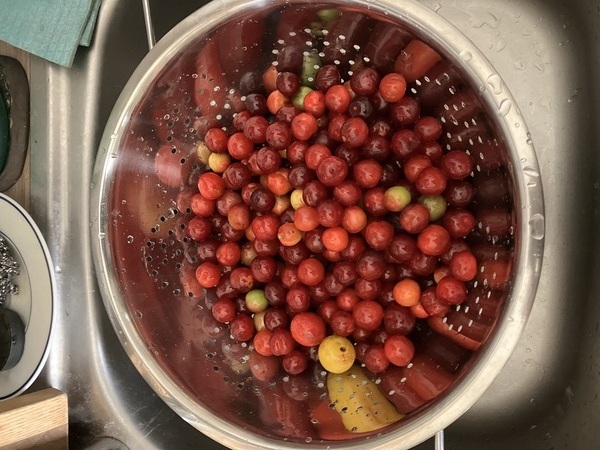
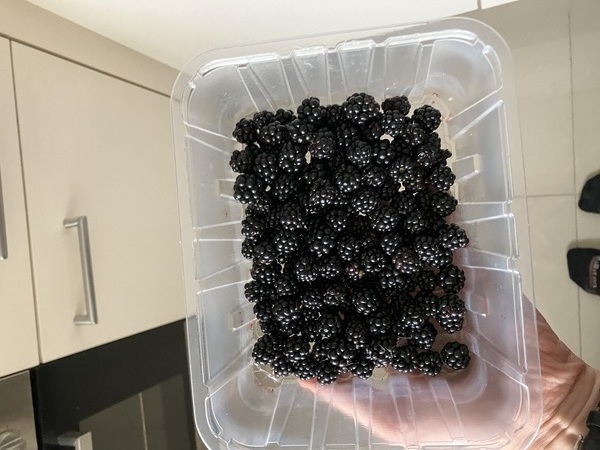
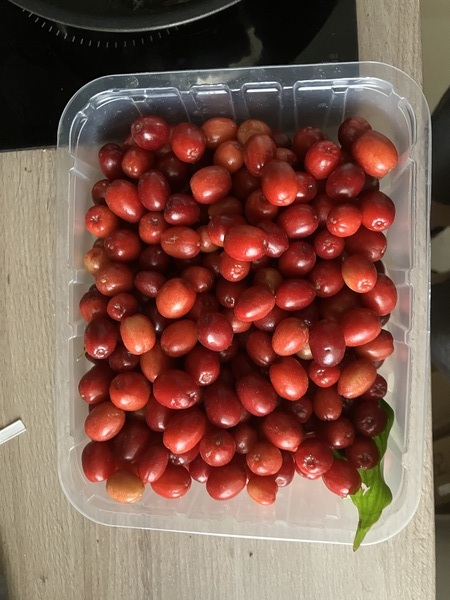
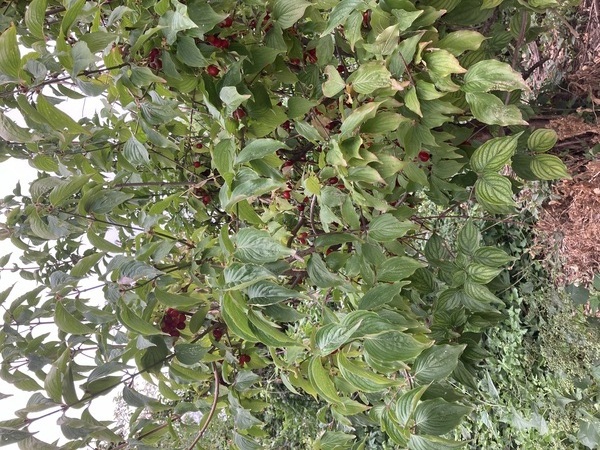
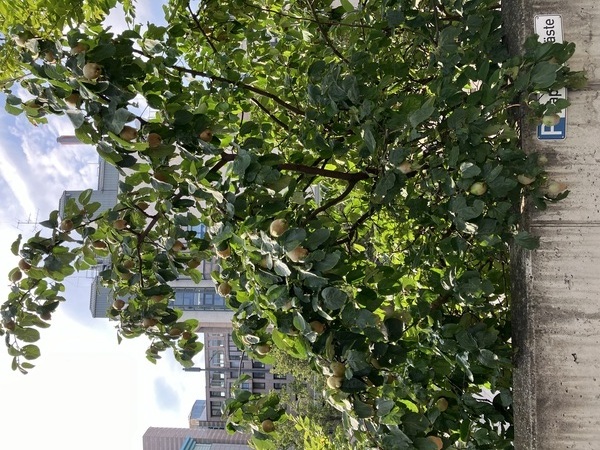
Making jam
I have mostly been making jam from the fruit that I don’t eat directly. So far in 2024 I’ve made jam with:
-
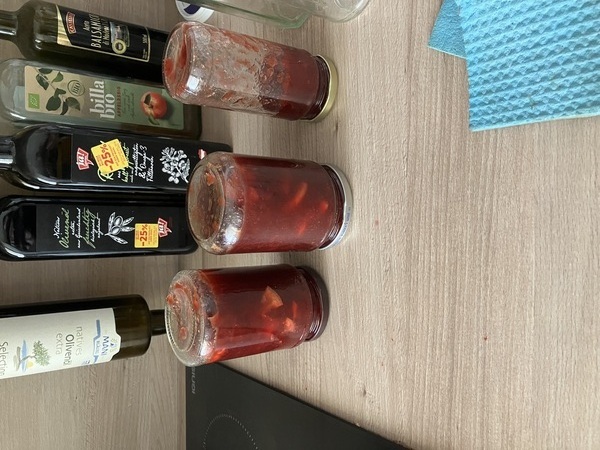
Mirabellen and Kornelkirschen:
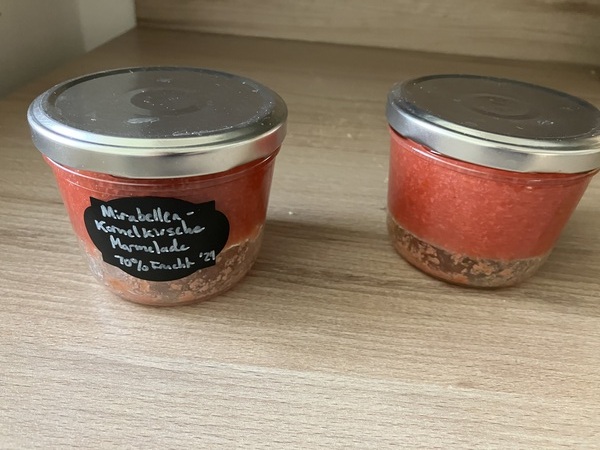
Zwetschgn (that is a link to Bavarian Wikipedia(!); see here for Hochdeutsch), though alas I did not find any public Zwetschgn trees this year, and ended up buying them
I missed out on Mulberries this year, but I’ve just harvested some Quinces I’ve had my eye on and will make jam from them soon.
I also made a red sauce from rose hips as a replacement for tomato sauce.
The pits
One big disadvantage of fruit trees on public land is that the fruit is generally smaller and there are therefore many more seeds to remove for a given quantity than with farm-raised fruit, and they’re often “cling fruit” which hasn’t been bred so that the stone comes out easily. I’ve tried various things, with varying degrees of success. I bought a “Flotte Lotte” (food mill) at a thrift store, but unfortunately it doesn’t work well with larger fruit stones like in plums; the clearance is too low for anything much bigger than an apple seed and isn’t adjustable. Breaking the fruit up with my electric mixer seemed like a good idea but it just made a (dangerously hot) mess, even on the lowest setting. Picking the seeds out with a combination of a big slotted spoon and a small teaspoon works alright with plums, but becomes far too tedious with something like Kornelkirschen.
The best method I’ve found so far is to cook the fruit for a while, then pile the mixture all into a sieve and use a slotted spoon to churn it around and force it down into the sieve, which sort of replicates the food mill manually. Whatever goes through the sieve or comes up through the spoon can go directly back into the pot; eventually the seeds get rubbed pretty clean and left in the middle. But this method is still a fair amount of work.
Sugar and acid content
I’ve been struggling a bit with getting the right mix of fruit and sugar. A sufficiently high sugar content is apparently important as a preservative. But every time I’ve made jam, I find that the pure cooked fruit has a lovely acidity that just completely disappears once the recommended amount of sugar has been mixed in. Many recipes recommend adding lemons or lemon juice to recover the acidity, which is what I’ve been doing, but this seems backward to me and doesn’t really replace the taste that was lost. If anyone has better ideas that don’t involve keeping all of my jam in a refrigerator, please let me know.
Mundraub
Mundraub.org itself seems to be languishing a little. There were lots of gathering points mapped between about 2010 and 2019, including entries made by the City of Vienna itself. But the quality of the data is now just OK, in my experience. Some of the plants have died or been removed in the meantime; some have grown to the point where they are too tall for harvesting fruit to be practical. It’s a gamble whether you’ll find anything when you visit a new tree.
There’s also no obvious way to download the data into any other mapping application, which makes it less useful if you want, say, to pull up cycling directions to a particular tree on a smartphone. The website works fine on a smartphone, including as a progressive web app, but it could use a bit of polish: fat fingers sometimes make it a chore to switch the various plant types on and off, the zooming level doesn’t stay put after clicking on a mapped plant, and it’s not possible to search with free form text (e.g. to find different subspecies of plums based on the comments, since Mundraub lumps them all together). If anyone from the site reads this and wants some help with these things, write to me!